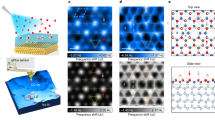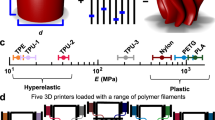Abstract
THE shape of the curve relating the rate of crystal growth to temperature of undercooling is familiar as a hump-backed curve. The shape of the low-temperature portion is usually ascribed to viscosity, and that at higher temperatures either to surface tension barriers hindering nucleus formation, or to a rather arbitrary undercooling factor based on the geometry of the phase diagram1. The former is inadmissible where the growth of crystals already in existence is being considered, and the latter gives a very poor agreement with the experimental data, due, no doubt, to the arbitrary nature of the assumptions involved.
This is a preview of subscription content, access via your institution
Access options
Subscribe to this journal
Receive 51 print issues and online access
$199.00 per year
only $3.90 per issue
Buy this article
- Purchase on Springer Link
- Instant access to full article PDF
Prices may be subject to local taxes which are calculated during checkout
Similar content being viewed by others
References
Preston, E., J. Soc. Glass Tech., 24, No. 104 (Aug. 1940).
Author information
Authors and Affiliations
Rights and permissions
About this article
Cite this article
COX, S., KIRBY, P. Rate of Crystal Growth in Glass. Nature 159, 162–163 (1947). https://doi.org/10.1038/159162a0
Issue Date:
DOI: https://doi.org/10.1038/159162a0
This article is cited by
-
Acoustic microscopy of ceramic-fibre composites
Journal of Materials Science (1993)
-
Tensile behaviour of borosilicate glass matrix-Nicalon (silicon carbide) fibre composites
Journal of Materials Science (1992)
-
Annealing of Glass
Nature (1948)
Comments
By submitting a comment you agree to abide by our Terms and Community Guidelines. If you find something abusive or that does not comply with our terms or guidelines please flag it as inappropriate.



